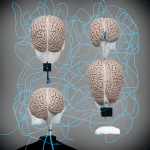As we stand at the crossroads of the digital revolution, the question arises: can technology play a role in preserving linguistic diversity and rescuing endangered languages? Linguistic diversity is more than just a cultural asset; it’s an essential part of the global community’s shared heritage. It provides a rich tapestry of ideas, perspectives, and histories. Yet, many languages are endangered, and it’s high time we harnessed the power of technology to prevent the loss of these invaluable cultural resources.
The Global Scale of Language Endangerment
Let’s take a moment to consider the scale of this issue. Languages have always evolved and disappeared over time, but the rate of language loss has accelerated dramatically in the past century. A significant number of the world’s languages are currently at risk of extinction. With each language that fades away, we lose a unique perspective on the world, centuries of human thought and a rich tapestry of cultural heritage.
A découvrir également : How Is the Metaverse Influencing Online Social Interactions and Commerce?
Indigenous communities are most affected by this phenomenon, as their languages tend to be most vulnerable. In many cases, only a handful of elderly speakers remain, and younger generations are increasingly adopting dominant global languages. This situation not only threatens linguistic diversity but also the preservation of cultural traditions, oral histories, and indigenous knowledge that are passed down through these languages.
The Role of Technology in Language Preservation
Technology offers an unprecedented opportunity to mitigate language loss and promote linguistic diversity. We now have digital tools and platforms that can aid in language learning and preservation. Here’s how technology is stepping up to the plate.
Cela peut vous intéresser : What Are the Technological Advances in Non-Invasive Brain Stimulation Therapies?
Firstly, digital repositories and online databases can store vast amounts of linguistic data, from dictionaries and grammar guides to audio recordings and written texts. These resources can be easily accessed by speakers and learners worldwide, providing a vital lifeline for endangered languages.
Secondly, translation technology has the potential to bridge the gap between dominant languages and endangered ones. While it’s still in the early stages, efforts are being made to develop machine learning algorithms that can translate endangered languages. This could dramatically increase the accessibility and visibility of these languages in the digital realm.
Digital Learning Platforms and Language Revitalisation
Along with storing linguistic data and facilitating translation, digital platforms also offer an innovative way to engage language learners and promote the revitalisation of endangered languages.
Online language learning platforms have gained popularity in recent years due to their accessibility and interactivity. They allow users to learn languages at their own pace, in their own time, and from anywhere in the world. Integrating endangered languages into such platforms could provide a boost to their revitalisation efforts.
Moreover, these platforms can also foster a sense of community among learners and speakers. They can enable the sharing of learning resources, cultural narratives, and personal experiences, thereby creating a vibrant and engaging learning environment. These virtual communities can play a crucial role in keeping endangered languages alive and kicking in the digital age.
Technology and Indigenous Communities: A Collaborative Effort
While technology provides promising tools for language preservation, it’s crucial that indigenous communities play a leading role in these efforts. After all, they are the custodians of these endangered languages and the cultural knowledge they embody.
Collaboration between technological experts and indigenous communities can ensure the development of tools and resources that are culturally sensitive and responsive to the needs of the community. This includes ensuring that language preservation efforts respect the cultural context of the language, and that the community has control over how their language and cultural materials are used and shared.
At the same time, technology can also help to empower these communities. Digital literacy skills can provide new opportunities for economic development, while also enabling community members to document and share their language and culture with a global audience.
The Future of Technology and Language Preservation
So, can technology help preserve linguistic diversity and endangered languages? The answer is a resounding ‘yes’. However, it’s not a silver bullet solution. Technology alone cannot save a language; it requires the active engagement and commitment of the language speakers themselves.
But what technology can do is provide powerful tools and resources to support these efforts. It can make language learning more accessible and engaging, facilitate the documentation and translation of endangered languages, and empower indigenous communities to share their languages and cultures with the world.
The future of language preservation looks brighter thanks to technology. However, we must ensure that these efforts are ethical, collaborative, and centred on the needs and rights of the language communities. With the right approach, technology can be a powerful ally in the fight to preserve our world’s rich linguistic diversity.
Enhancing Linguistic Diversity with AI Technology
The advancement of artificial intelligence technology has opened new doors in the field of language preservation. In the same way that AI can learn to recognize patterns and algorithms in vast sets of data, it can also be programmed to learn and understand the complexities of a language.
AI language models can analyze and process linguistic data from digital repositories, learning the grammatical rules, vocabulary, and idioms of endangered languages. This could significantly enhance the accuracy of translation technology and enable the development of interactive language learning apps.
Moreover, AI technology could be used to create virtual assistants or conversational agents in endangered languages. Imagine a Siri or Alexa that can communicate in a threatened indigenous language, helping to keep the language alive in everyday use.
However, the application of AI in language preservation also raises ethical considerations. Since AI relies on data, it’s vital that the data used is obtained and used with the consent of the language community. People must be fully informed about how their linguistic data will be used, and they should have the right to control and manage this data.
Bridging the Digital Divide: Ensuring Access to Technology
While technology holds great promise for language preservation, it’s also important to note that access to technology is not universal. Many indigenous communities, where most endangered languages are spoken, are also marginalized and disadvantaged in terms of technological access. This is a challenge that needs to be addressed for technology to effectively aid in language preservation.
Efforts must be made to bridge the digital divide and democratize access to technology. This could include initiatives to provide internet connectivity and digital devices to remote communities, as well as digital literacy training.
Furthermore, it’s crucial that digital tools and resources for language preservation are user-friendly and accessible to people with varying levels of digital literacy. This means that they should be intuitive to use, with clear instructions and support available in the local language.
Conclusion: Technology as a Tool, Not a Panacea
In conclusion, technology provides a valuable tool for preserving linguistic diversity and endangered languages. It offers unprecedented opportunities for language documentation, translation, and learning. It can empower indigenous communities to share their languages and cultures with the world, and it can help to engage a new generation of language learners and speakers.
Yet, it’s important to remember that technology is not a magic solution. It cannot replace the human element – the passion, dedication, and lived experience of the language speakers. Preserving a language requires the active engagement of the community, the transmission of the language from one generation to the next, and the use of the language in daily life.
Moreover, the application of technology in language preservation needs to be guided by ethical principles. It should respect the rights of the language communities, ensure their access to and control over their linguistic data, and work towards bridging the digital divide.
In a nutshell, technology can be a powerful ally in the fight to preserve our world’s linguistic diversity, but it should always be in service of the people and the languages it’s aiming to protect.











